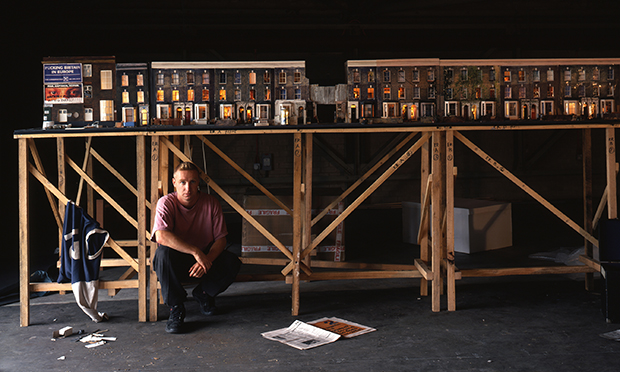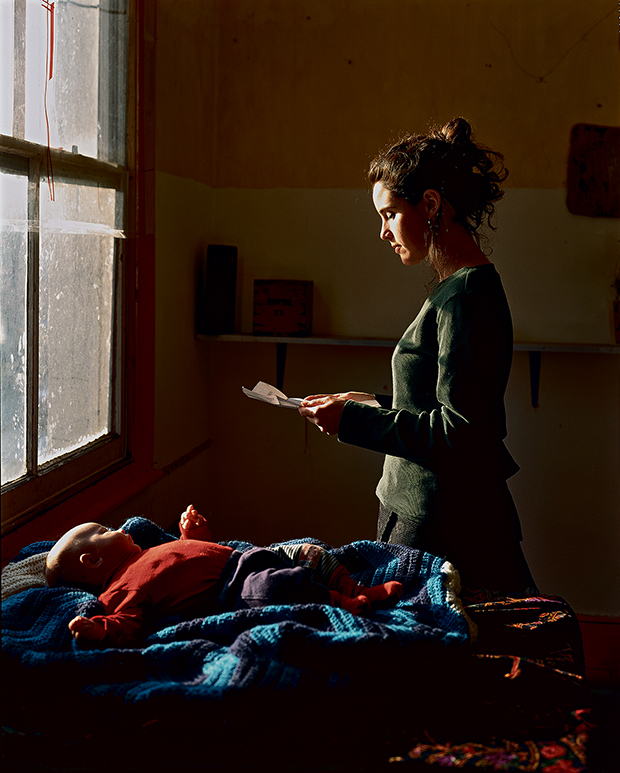
What is now a leafy side street connecting London Fields to Mare Street was the scene of a hard fought battle during the 1990s.
Victorian terraced houses on Ellingfort Road, owned by Hackney Council, were run down and classified as derelict. Tenants were moving out, and one by one squatters moved in. Before long the entire street was squatted.
“The neighbourhood is a crime-ridden, derelict ghetto, a cancer – a blot on the landscape,” said the managing director of food distributors the Don Group, to the Hackney Gazette in 1993.
According to contemporary reports, the company was planning with Hackney Council to invest £6 million in a 21,000 square foot food retail distribution and manufacturing park in the area, dubbed the Hackney Industrial Improvement Area.
“The problems associated with dereliction – of vandalism, squatting, fly-tipping – which have bedeviled the area for years, will be arrested by the proposed development,” said the then Council Leader, John McCafferty.
The development, which was due for completion by September 1995, aimed to create 200 jobs, but would mean bulldozing the squatted houses on Ellingfort Road and London Lane, home to some 100 people.
Ellingfort Road’s most well-known resident was Tom Hunter, a photographer who documented the lives of his neighbours in a series of photographs and presented them with a dignity that stereotypical representations lacked.
When Hunter squatted 17 Ellingfort Road in 1991, he had been working as a tree surgeon but was about to start a degree in photography at the London College of Printing.
We meet at his house, which isn’t far from Ellingfort Road, on a pretty street north of London Fields lined with smart terraced houses.
He tells me that squatting was fairly commonplace back then, as poorly maintained houses and flats, owned by councils and leased to housing associations or cooperatives, weren’t considered worth repairing.
At the end of leases tenants would move out and the property would lie empty until squatters moved in.
“You’d move in and tell your mates: ‘there’s a house we’ve been talking to the housing association tenants about in number 33. They’re moving out next month, they’ve given us the keys, you can move in there.’ So you’d get your mates to move in.”
Squatting Life
Hunter was a fairly seasoned squatter by the time he moved into Ellingfort Road, where he hoped to have a studio for his photography. The street before long began to fill, empty houses one by one becoming squats. But the squatters weren’t just artists, or students needing somewhere cheap.
“It was all very varied,” Hunter recalls. “Two doors down the guys were motorbike despatch riders – they’d save up enough money and go off to the Far East for a few months. Next door to me there was a builder, and a girl who worked in a casino as a croupier. There were charity workers, people doing hardcore labouring jobs, and others who were saving up. It was a really good mixture.”
The squatters began sharing and cooperating, and the community grew. Garden walls were knocked down and a communal garden established. A former motorcycle repair workshop became a community café, with food served three times a week. Bands like Asian Dub Foundation played at parties and Howard Marks came to give a talk. There was even a mini city farm – a pond with ducks, chickens and goats.
It might have been their shared ‘outsider’ status as squatters that brought them together. But what really cemented this tight-knit community was the fear of being evicted and losing what they had built.

Eviction Battle
The battle to save the area began in 1994, when the squatters were threatened with eviction. Hackney Council unveiled plans to demolish the houses to make space for a large-scale industrial zone, including a frozen chicken warehouse.
“It’s hard to imagine now that area which is just so vibrant. Now it looks so gentrified with all those places opening up but at the time it was an area of abandonment and dereliction,” says Hunter.
The squatters weren’t alone in fighting the plans. On their side were local businesses against the idea of a fenced off industrial area. Hackney Council chose not to involve squatters in the consultation process, but legitimate businesses were invited along to the meetings.
“The shops, the businesses and the pubs immediately came straight to us and said: ‘do you realise they’re going to knock down your houses and kick you out?’ We made lots of strong links and that came about because we were facing eviction.”
One of the squatters ran a bike shop and was invited, as a local businessperson, to the meetings with the council.
“He became our main representative. They didn’t realise all along that he was a squatter too. They thought like stereotypical squatters you sign on or you’re a student and didn’t realise you could be running a business or doing lots of different things.”

But the real game changer was yet to come. Hunter was approaching the end of his course and for his degree show, he and his friend James McKinnon made an exact replica model of the two squatted streets.
Made out of cardboard, wood, transparencies and photographs, The Ghetto accurately recreated the exteriors of the houses and the lit-up interiors of rooms, complete with the people who lived there, sitting on their beds or drinking tea.
“I wanted to make a document of the area before it was bulldozed, that was the idea. Because I wanted to represent everyone’s houses before they were all destroyed so that in generations to come they could see what was there.”
The sculpture, which is now on permanent display in the Museum of London, challenged the prevalent sense in the tabloid media that squatters were a threat to civilised society.
Hunter’s university tutor, Julien Rodriguez, was so impressed by the piece that he arranged for people from the Museum of London, the Guardian and Time Out to attend the degree show, and suddenly the squatters’ plight was catapulted onto the national stage.
“It became a political propaganda piece for us. It was an amazing transformation from being a squatter to the Guardian saying: ‘well what do you think about housing issues?’ It was like, wow, people are actually interested. And then lots of people started saying this is really important, and maybe we shouldn’t be knocking this down.”
With the sculpture making headlines, Hackney Council’s attitude softened. “Suddenly people in the council felt compelled to speak to us, so we could actually talk about a way to save and regenerate the area.”
“It gave my art a meaning and a purpose – it wasn’t just about putting pictures on the walls. It was a huge step in my career, a launching place which made me realise the potential of making art.”
Having won the propaganda war, the squatters spent the next 10 years transforming the community into a housing cooperative, borrowing money from a housing association to buy the properties from the council and fixing them up. Even today they are still repaying the money on the houses.
“That’s pretty much as it’s been ever since. I spent another seven years there I think, my daughter was born there, and I still stay there now and again. My friends are still there and they’ve got kids now that are the same age as my kids. They all go to Gayhurst so we even share the same school run.”
tomhunter.org

I stayed with friends at London field’s and in the 80.s I was living opposite hackney town hall then moved to Pembery a state then London field had so much fun being part of squatters right after that I ended up being one of the eco worrier s where has everyone gone back then I could be anywhere in England and bump in to my friends I feel sad about it love and peace
I was living in a squat in hackney wick in 1992 with my 2 lovely swedish aquaintences , along with one other woman who was like a maid and 1 German man and one other fella and despite the fact that I wouldn’t exactly
say ignorance is bliss , we didn’t really care about much .
We only were worried about feeding ourselves not how we dressed or smelt ,
We were like one happy family that looked out for eachother and we were all best friends.
One thing I would like to know is that would you know about the tower block that was being squatted in that was next to a marsh or a green whether it was hackney marsh or Clapton park.
The reason why I want to know Is because I want to make a theatre play , or even make a film and write a book.
I am with a homeless organization project of agentsas member of it .
It’s called cardboard citizens in east London. It’s for homeless people.
If that’s any bit of good information.
Thank heavens for people like mister hunter , where would we be without people like him.